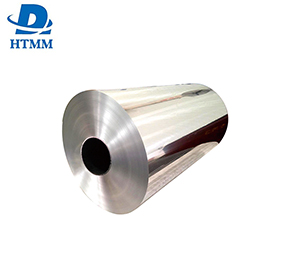.jpg) Small Thickness Aluminium Foil Roll
Small Thickness Aluminium Foil Roll
Battery foil is one of them. The superhydrophobic/hydrophilic material preparation technology applies this principle to transform the solid surface into a nano-scale rough porous structure. This rough porous structure will make the hydrophobic/hydrophilic effect more obvious. This method will not increase the surface tension of the aluminum foil itself, but theoretically it can enhance the spreading effect of the slurry.
The strength/elongation of high-strength/elongation battery foil is mainly to meet the requirements of not breaking when stretched and cold pressed during the coating process of lithium batteries, and to maintain sufficient burst resistance. In order to increase the energy density, it is necessary to further reduce the thickness of the battery foil to increase the surface area per unit volume. The thinning of the battery foil puts forward higher requirements for its strength.
At present, due to the differences in the coating equipment and processes of various lithium-ion battery manufacturers, the requirements for the strength/elongation of the thinned battery foil have not yet been met. The improvement of battery foil strength is mainly considered from two aspects, one is to increase the degree of work hardening, and the other is to increase the degree of alloying. If the degree of work hardening is too high, band breakage and shape problems are likely to occur during the foil rolling process.
Therefore, the direction of improving the strength of the battery foil should be to increase the content of Mn and Cu at an appropriate processing rate.

Uses Of Aluminium Foil Paper An important function of aluminum foil is to make batteries.





